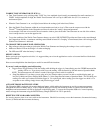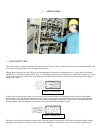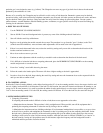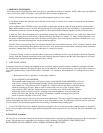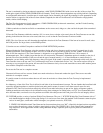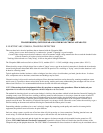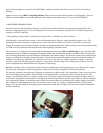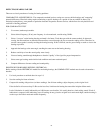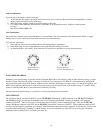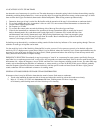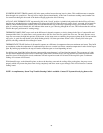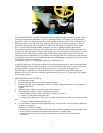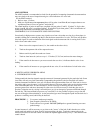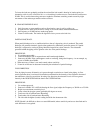
23
Lack of Lubrication:
To avoid lack of lubrication, note the following:
1. As the lubricant film reduces, the sound level will increase. A rise of about 8 dB over baseline accompanied by a uniform
rushing sound will indicate lack of lubrication.
2. When lubricating, add just enough to return the reading to base line.
3. Use caution. Some lubricants will need time to uniformly cover the bearing surfaces. Lubricate a small amount
at a time.
DO NOT OVER-LUBRICATE
Over-Lubrication:
One of the most common causes of bearing failure is over-lubrication. The excess pressure of the lubricant often breaks, or “pops”
bearing seals or causes a build-up of heat, which can create stress and deformity.
To avoid over-lubrication:
1. Don't lubricate if the base line reading and base line sound quality is maintained.
2. When lubricating, use just enough lubricant to bring the ultrasonic reading to baseline.
3. As mentioned above, use caution. Some lubricants will need time to uniformly cover the bearing surfaces.
SLOW SPEED BEARINGS
Monitoring slow speed bearings is possible with the Ultraprobe 9000. Due to the sensitivity range and the frequency tuning, it is quite
possible to listen to the acoustic quality of bearings. In extremely slow bearings (less 25 RPM), it is often necessary to disregard the
display and listen to the sound of the bearing. In these extreme situations, the bearings are usually large (1/2" and up) and greased with
high viscosity lubricant. Most often no sound will be heard as the grease will absorb most of the acoustic energy. If a sound is heard,
usually a crackling sound, there is some indication of deformity occurring.
On most other slow speed bearings, it is possible to set a base line and monitor as described.
FFT INTERFACE
The Ultraprobe may be interfaced with FFT's via the UE-MP-BNC-2 Miniphone to BNC connector or the UE DC2 FFT Adapter.
The Miniphone plug is inserted into the headphone jack of the Ultraprobe and the BNC connector is attached to the analog-in
connector of the FFT. There are also two accessories that connect to an FFT via the Ultraprobe I/O port. They are the 5PC MP
(using a Miniphone connector to the FFT) and the 5PC-BNC (using a BNC connector to the FFT). These connectors enable an FFT
to receive the heterodyned, (translated) low frequency sound information detected from the Ultraprobe. In this instance it can be used
to monitor and trend bearings, including low speed bearings. It can also extend the use of the FFT to record all types mechanical
information such as leaking valves, cavitation, gear wear, etc.
Proper Lubrication
Reduces Friction
Lack of Lubrication
Increases Amplitude Levels



